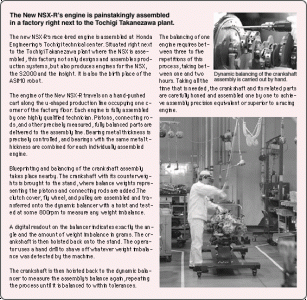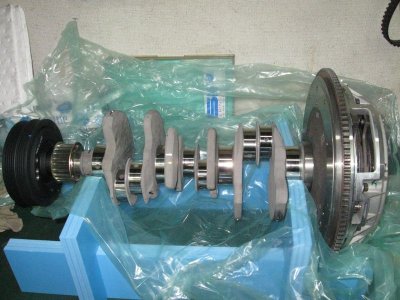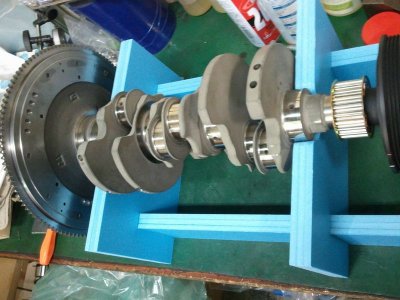I have my weight reduction posts in the extreme weight reduction area. Pretty much the only thing left in the car is the dash. And I'm working on a carbon dash to replace the heavy leather one. Door panels are going to be completely gone soon and replaced with carbon Kevlar ones. All the interior paneling is long gone and sound deadening gone. All the outer body panels are frp now and bumper beams all aluminum now. Lots more little stuff but yeah
- - - Updated - - -
The race cars did have twin turbo set ups for GT300. But the 5 street legal cars were N/A with ITB
The GT300 Super GT cars are not turbocharged:
http://www.nsxprime.com/forum/showthread.php/16686-JGTC-NSX-Engine
I think you are thinking of the Twin Turbo GT1 cars that raced at LeMans in 1995 (both did not finish). In 1994-1996, Naturally Aspirated NSXs ran in the GT2 class and won with Keiichi Tsuchia, Akira Iida, and Kunimitsu Takahashi as drivers in 1995.
A quick google search found this quote on Wiki:
"The NSX-R GT was created by Honda solely to comply with the Super GT production-based race car homologation requirements. As JGTC rules required at least five production cars for any race car version to compete, the NSX-R GT was limited to a production run of only five cars."
-Again, the car is a bit of a 'unicorn' and nothing has ever been published on any of the mythical '5 cars' -if they even exist at all. The body shape was derived for homologation purposes and Honda fudged their way into making more competitive racecars though building this "NSX-R GT".
IIRC, Ichishima-san said the 5 NSX-R GTs varied from Turbo to stoked motors and none of them are the same. However, there's still no proof that any of them really exist, or if this was one of the 5 or not. I can't remember but I thought I was told it was one of the "5". Either way Spoon has a very close relationship with Honda.
Jalopnik says it was one of the 5:
http://jalopnik.com/5083478/spoon-honda-nsx-r-gt-first-drive
Road & Track says it was one of the 5:
http://www.roadandtrack.com/car-reviews/car-comparison-tests/bling-quartet-spoon-nsx-r-gt
Modified says its not one of the 5:
http://www.modified.com/features/sccp_0902_2005_honda_nsx_type_r/
Either way it really does not matter...











